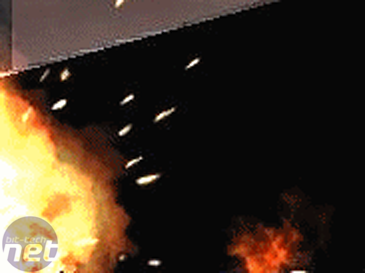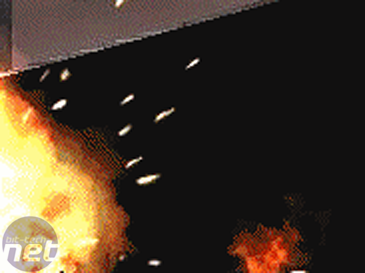
Dynamic Range
The Dynamic Range of an image, or video, is the range of brightness between the darkest and brightest regions of an image. Before the advent of HDR, and indeed even on the PC you are reading this on, we made do with what is now know as Low Dynamic Range, or LDR.To date, this dynamic range has been an 8-bit value, or 256 shades of any given colour. Every picture is made up of Red, Green and Blue (RGB) channels, so our current best is 24-bit True colour, or the 16.7 million colour mode most of you should be running right now.
The term "32-bit colour" is actually a misnomer when talking about display colour depth. Many people believe that it represents some 4.2 billion colours, but in reality, it is just 24-bit True colour plus a further 8-bits of alpha transparency.
48-bit colour
Recently, some professional image software, like Adobe Photoshop, has begun to offer 16-bits per channel, producing 48-bit colour - good for a fairly inconceivable 281 trillion colours. Naturally, no current graphics card or display could render that colour range, nor would the human eye be able to see the difference. However, this increased precision is rendered internally to guard against the rounding errors that creep into 24-bit image manipulation. Users operate as long as possible in 48-bit mode before down sampling to 24-bit for output.To illustrate this effect, here is an extreme example using a normal 24-bit True colour screen shot of F.E.A.R.
Just for a minute, we are going to pretend that this image is actually a 48-bit image. We are going to boost the Brightness by 30% and the Contrast by 20%, then apply a Sharpen filter. Because we have retained the high colour depth, the changes are applied smoothly and with extreme accuracy. Consider this our reference quality image.
Once we have applied our changes, we would have to down sample from 48-bit colour back to 24-bit True colour to save as a normal image that can be displayed on a standard monitor; our 281 trillion shades are converted to a mere 16.7 million.
To simulate this lossy conversion from 48-bit to 24-bit, our original reference 24-bit screen shot has been down sampled to 8-bit colour below left, or just 256 shades. Colours are blended as best as possible, but ultimately the image quality suffers in the process. However, the image quality is far worse if only 24-bit mode is used during the whole process, simulated here by working in 8-bit colour during the entire process, below right.
Here you can see the rounding errors that can occur. On the left is our "high quality" image: rendered internally at 48-bits, transformations made, and down sampled to 24-bit, as simulated by working in 16.7m colours before down sampling to 256 colour mode. On the right is our "low quality" image: when the down sampling occurs before the transformations are applied, the colour data that is lost causes inaccuracies when they are applied later.
Note how pixellated the explosion on the right is. The wisp of flame in the lower right is substantially less detailed, as the colours simply did not exist when the brightness was later increased. Because we reduced the available colours (dynamic range) before we made changes, the value of the background black has changed substantially: 1,1,1 in the original 24-bit image, it shifted to 7,7,7 in the first image. However, in the second image is blew out to a grey 17,16,16.

MSI MPG Velox 100R Chassis Review
October 14 2021 | 15:04











Want to comment? Please log in.